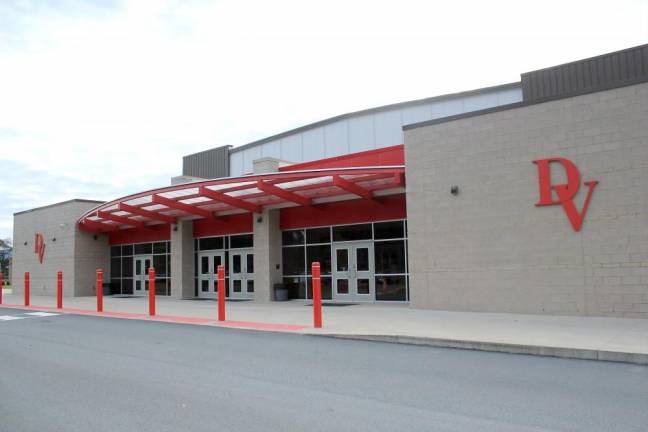Delaware Valley considers 5 options for Aug. 31 reopening
Milford. The options, presented with pros and cons, range widely from a “return to normal” scenario to all-distance learning, with several hybrid options in between. Sixty-four percent of parents hope the school will open traditionally with in-person learning.

The Delaware Valley School District plans to reopen on Aug. 31, according to a July 16 presentation by the superintendent, Dr. John Bell.
What will the reopening look like? The presentation, which is available online at dvsd.org, lays out the pros and cons of five possible options. The results of a district-wide survey of parents and personnel has also been released (please see sidebar).
Bell said that almost every district he’s spoken to plans on having elementary students attend five days per week. For secondary students, there is about a 60/40 split between districts having students come five days per week and those considering an alternating day schedule.
For health and safety guidance, the district is relying on the Pennsylvania Departments of Education and Health, the federal Centers for Disease Control (CDC), Bucks County Department of Health, the Colonial IU 20 Health Services Department, the Delaware Valley nursing staff, and Wayne Memorial Hospital. The Wayne-Pike Regional Task Force includes representatives from Wayne Memorial Hospital (CEO, doctors, nurses, outpatient care director, medical director, community health coordinator, human resources director, and public relations department), Pike County Emergency Management, Wayne County Emergency Management, the Pike County Health Department, and four area school districts.
Here are the options under consideration
1. All students attend in-person daily
• Pro – The “return to normal” scenario is seen by the district as the best form of teaching, with a teacher in a classroom and his or her students fully engaged in the educational process. All services are available to students in-person (mental health, guidance, nurses), easy access to co-curricular teams and clubs
• Con – This option would mean a large number of students in school at once
• Costs will include unbudgeted expenses for cyber schools and extra cleaning.
2. Students attend in-person or via Zoom daily
• Pro – This “almost normal” option offers live teaching during each class, with a reduced number of students physically present. It gives families two good options for five-day a week learning
• Con – The downside includes possible problems with technology or student privacy. Zoom students have less access to services and activities, and large class sizes if few choose Zoom.
• Costs will include unbudgeted expenses for cyber schools and extra cleaning.
3. Students attend in-person or via Zoom on alternating days
• Pros – This scenario offers live teaching during each class, with 50% of students physically present
• Cons – This option offers only 90 teaching days and 90 independent work days, if it continues for a full year.
• Costs– This will drive more students to cyber than option #2 because of the fewer days of direct instruction. There will be extra cleaning, with fewer students in-person each day. Staff furloughs are possible with only half of students present.
4. Students attend in-person on alternating days and work independently on opposite days
• Pro – This option also offers live teaching during each class, with 50% of students physically present.
• Con – However, this scenario offers no Zoom option, and only 90 teaching days if it continues for the full academic year.
• Costs – This will drive more students to cyber than option #2. Extra cleaning will be needed. With less students in-person each day, staff furloughs are possible
5. 100% online
• Pros – If students attend a full day of classes via Zoom each day, this option offers live teaching every period of every day, with no student physical contact
• Cons – The downside is less social interaction and increased mental health concerns. Students will also miss out on co-curricular activities and sports. And there may be technology problems for some students.
• Costs will entail unbudgeted expenses for DV Cyber, outside cybet. This could cause significant staff furloughs, which would help offset increased cyber costs but would be harmful to local economy.